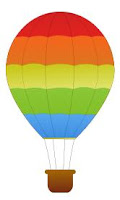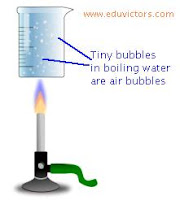Class 6 - Science - CH9 - The Living Organisms and Their Surroundings
The Living Organisms and Their Surroundings
 |
| Cockatoo - Can it survive without mangrove? |
(NCERT Chapter Solution and other Q & A)
Q1: What is a habitat?
Answer: The surroundings where plants and animals live, is called their habitat. A habitat provides suitable climatic conditions like food and shelter so that plants and animals can live there.
Q2: Do all organisms live in same habitat?
Answer: No all organisms do not live in same habitat. Some may share the habitat e.g. lion and deer. For example camel can live in deserts only while frogs can survive in fresh/rain water.
Q3 Are all forests habitats of tigers or lions?
Answer: No all forest are not habitats of tigers and lions. For example, tigers can live in forests which have thick forests, water (ponds and streams) and rich supply of food (e.g. deer).
Q4: How are cactus adapted to survive in a desert?
Answer: Cactus survive in deserts due to following adaptations:
- It has flat green stem to store water and prepare food by photosynthesis.
- The stem is also covered with a thick waxy layer, which helps to retain water.
- Its roots that go very deep into the soil for absorbing water.
- Leaves are turned into spines to prevent loss of water.
Q5. Fill up the blanks
Answer:
(a) The presence of specific features, which enable a plant or an animal to live in a particular habitat, is called adaptation.
Answer:
(a) The presence of specific features, which enable a plant or an animal to live in a particular habitat, is called adaptation.
(b) The habitats of the plants and animals that live on land are called terrestrial habitat.
(c) The habitats of plants and animals that live in water are called aquatic habitat.
(d) Soil, water and air are the abiotic factors of a habitat.
(e) Changes in our surroundings that make us respond to them, are stimuli called.
(f) Fish have streamline shaped body that help them to move inside water.
(g) Dolphins and whales breathe through nostrils or blowholes.
(h) In the mountain regions, the trees are normally cone shaped and have sloping branches.
Q6: Which of the things in the following list are nonliving?Plough, Mushroom, Sewing machine, Radio, Boat, Water hyacinth, Earthworm
Answer: Non-living Things: Plough, Sewing machine, Radio, Boat,
Answer: Animals: Yak, Snow leopard, mountain goat.
Plants: Pines, Spruce, Fir, Cedar
Q8: Give an example of a non-living thing, which shows any two characteristics of living things.
Answer: A bus or a car which shows movement and consume energy (petrol).
Q9: Which of the non-living things listed below, were once part of a living thing?
Butter, Leather, Soil, Wool, Electric bulb, Cooking oil, Salt, Apple, Rubber
Answer: Following are the things which were once part of living beings:
Q10: List the common characteristics of the living things.
Answer:
Q11: Explain, why speed is important for survival in the grasslands for animals that live there. (Hint: There are few trees or places for animals to hide in grasslands habitats.)
Answer: In the grassland there are less number of trees and places to hide. The animals are vulnerable to predators (e.g. lions, tigers, wolves etc.). They can only survive and escape if they run very fast. Therefore speed is important for survival in the grasslands for animals (e.g. deer) that live there.
Q12: Give examples of animals which give birth to young ones.
Answer: Humans, dogs, cats (mammals) give birth to young ones.
Q13: Give examples of Terrestrial habitats.
Answer: Deserts, forests, grasslands, coastal region, mountain regions.
Q14: Give examples of aquatic habitats.
Answer: Aquatic habitat includes rivers, ponds, lakes, ocean and swamps.
Q15: What is Acclimatization? How it is different from adaptation?
Answer: The small adjustments by the body to overcome small changes in the surrounding atmosphere for a short period of time are called acclimatization. While in adaptation, it takes thousands of years for a livings being to adapt to its habitat.
Q16: What are the two components of habitat?
Answer:
Q17: Why is adaptation necessary? What does happen to those animal who do not adapt to the environment?
Answer: Over thousands of years, the abiotic factors of a region change. To survive animals and plants must adapt to these changes. Those animals which cannot adapt to these changes die out, and only the adapted ones survive.
Q18: Do animals have the same kind of adaptations? Explain with an example.
Answer: Animals adapt to different abiotic factors in different ways. For example, to survive in deserts, camels have long legs and padded feet. While desert animals like snakes and rats do not have long legs, but they stay in burrows deep in the sand and come out during night, when it is cooler.
Q19: Name four important abiotic factors needed for growth of plants.
Answer:
(In progress...)
Q9: Which of the non-living things listed below, were once part of a living thing?
Butter, Leather, Soil, Wool, Electric bulb, Cooking oil, Salt, Apple, Rubber
Answer: Following are the things which were once part of living beings:
- Butter: Obtained from milk from dairy animals.
- Leather: From animal skin of buffaloes, cows etc.
- Wool: From hair of sheep and goat
- Cooking oil: seeds of plants (e.g. mustard) or by grinding whole plant (e.g. olive),
- Apple: fruit from apple tree
- Rubber: Latex of rubber tree.
Q10: List the common characteristics of the living things.
Answer:
- Movement: All organisms show movement of one kind or another. Animals can move from one place to another. While plants also show movement e.g. bend towards light.
- Respiration: All organisms breathe and respire. They intake oxygen and release carbon di-oxide.
- Feeding: They consume food to stay fit and grow.
- Growth and Death: All living beings grow i.e. with age they become larger in size and eventually die.
- Excretion: They remove waste material their bodies.
- Reproduction: Living being bear children.
- Stimuli or Sensitivity: All living beings react to external changes around them.
Q11: Explain, why speed is important for survival in the grasslands for animals that live there. (Hint: There are few trees or places for animals to hide in grasslands habitats.)
Answer: In the grassland there are less number of trees and places to hide. The animals are vulnerable to predators (e.g. lions, tigers, wolves etc.). They can only survive and escape if they run very fast. Therefore speed is important for survival in the grasslands for animals (e.g. deer) that live there.
Q12: Give examples of animals which give birth to young ones.
Answer: Humans, dogs, cats (mammals) give birth to young ones.
Q13: Give examples of Terrestrial habitats.
Answer: Deserts, forests, grasslands, coastal region, mountain regions.
Q14: Give examples of aquatic habitats.
Answer: Aquatic habitat includes rivers, ponds, lakes, ocean and swamps.
Q15: What is Acclimatization? How it is different from adaptation?
Answer: The small adjustments by the body to overcome small changes in the surrounding atmosphere for a short period of time are called acclimatization. While in adaptation, it takes thousands of years for a livings being to adapt to its habitat.
Q16: What are the two components of habitat?
Answer:
- Biotic component
- Abiotic component
Q17: Why is adaptation necessary? What does happen to those animal who do not adapt to the environment?
Answer: Over thousands of years, the abiotic factors of a region change. To survive animals and plants must adapt to these changes. Those animals which cannot adapt to these changes die out, and only the adapted ones survive.
Answer: Animals adapt to different abiotic factors in different ways. For example, to survive in deserts, camels have long legs and padded feet. While desert animals like snakes and rats do not have long legs, but they stay in burrows deep in the sand and come out during night, when it is cooler.
Q19: Name four important abiotic factors needed for growth of plants.
Answer:
- Soil
- Air
- Water
- Sunlight
Concept Map on Types of Habitat
 |
| Habitats |
(In progress...)





















